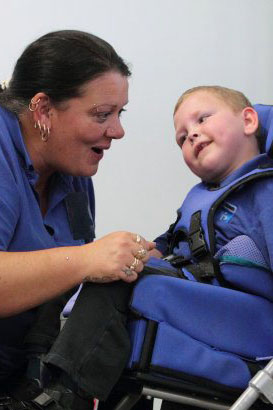

Whatever the situation, effective communicators achieve
their required outcome by judging their audience and co-ordinating both their choice of words and their delivery.
Edwards, 1999
Communication is deceptively complex as it not only requires motor skills and co-ordination, but also the cognitive abilities of recall, selectivity and timing, and emotional regulation appropriate to the context.
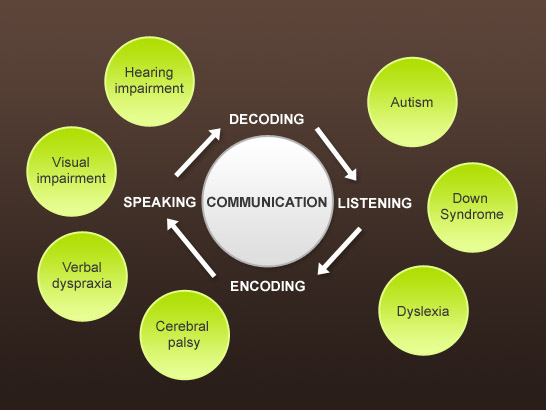
The diagram shows disabilities that are often associated with difficulties with aspects of communication.
Communication can break down when a child has difficulty with one or more of:
- Hearing;
- Understanding;
- Thinking of what they want to say;
- Speaking, eg poor articulation, stammering.
Similarly, a child may be able to communicate physically but have difficulty with:
- Understanding meaning – and so may switch off or not even listen;
- Using language particular to context; and
- Judging the social context, eg turn-taking, rate and volume of speech, awareness of personal space.
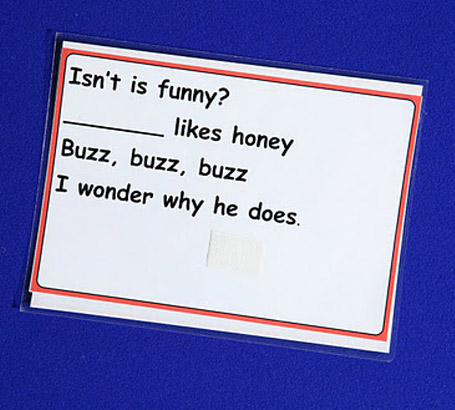
To help children to become more effective communicators it is important to build on the child's abilities in the following areas, as well as the way these work together:
- Vocabulary – content;
- Grammar – form or language construction, eg how many information-carrying ideas a child can understand and use; and
- Use of language eg the rules of conversation, such as taking turns.
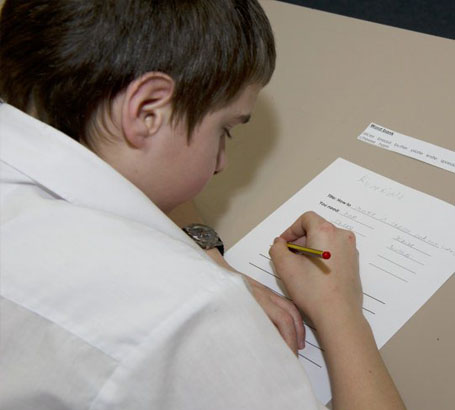
It is important to build children's knowledge and skills in each of these areas:
- Syntax
- Vocabulary
- Grammar
- Different language registers (eg the difference between classroom talk and playground chatter)
- Standard English
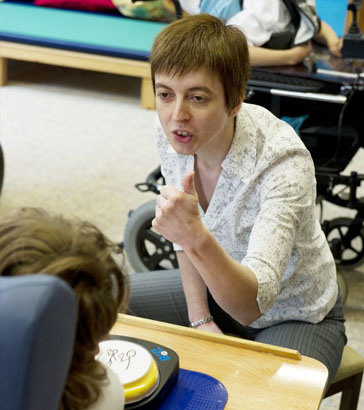
Effective use of language involves:
- Knowing when to listen and when to speak – not saying more than is necessary.
- Balancing your own communicating needs with those of others.
- Maintaining the topic, or giving a clear signal that you are going to change it.
- Judging the social context (eg degree of familiarity).
- Adapting language to suit the skills or status of the audience (eg younger children or the boss).
- Judging the tone of delivery.
- Repairing the conversation if the
listener doesn't understand.
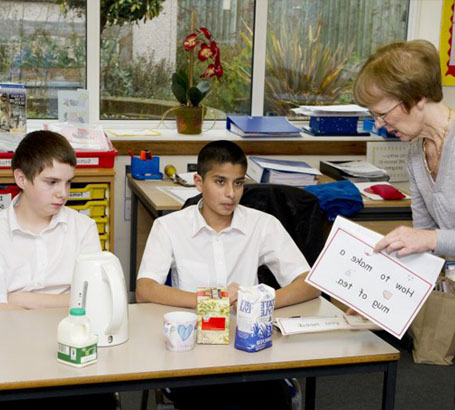
There is more to communication than learning the mechanics of speech and conversation.
Children acquire language in a social context, where language requirements may differ between different settings, eg home and school, possibly with different acceptable boundaries.
It is important for children and educators to be aware of the social and cultural conventions of different settings and situations.